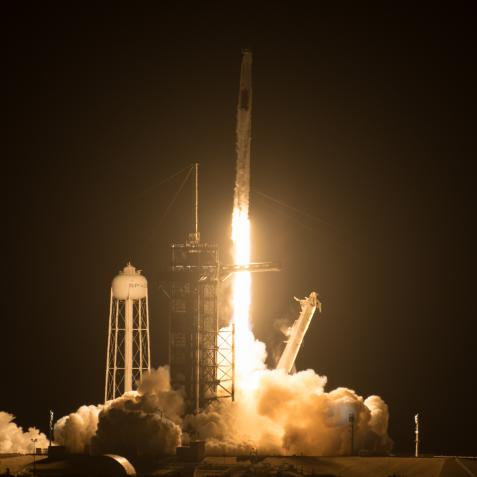
NASA/GCTC/Irina Spector
Expedition 65 to Launch on April 9
On April 9 at 3:42A ET, Expedition 65 will launch with three space travelers aboard a Soyuz MS-18 spacecraft from the Baikonur Cosmodrome in Kazakhstan to the International Space Station.
The 65th long-duration expedition to the International Space Station is set to begin this Friday. NASA astronaut, Mark Vande Hei, with Russian cosmonauts Oleg Novitskiy and Pyotr Dubrov will be hitching a ride to the orbital station in the Yu.A. Gagarin, named after the world’s first cosmonaut. From Kazakhstan to the orbital station, it will be a three-hour trip and happens to be scheduled for take-off three days before the 60th anniversary of human spaceflight.

NASA/Roscosmos
Expedition 65 crew members in Kazakhstan for a final training before the April 9 launch.
Expedition 65 will be the second spaceflight for Flight Engineer Vande Hei, the third for Commander Novitskiy, and the first for Flight Engineer Dubrov. The spacecraft carrying Vande Hei, Novitskiy, and Dubrov is scheduled to dock with the station’s Rassvet module at 7:07A ET. About two hours later, the hatches to the Soyuz and the space station are set to open. Between Crew-1, Expedition 64, and Expedition 65, the ISS will have 10 crew members aboard until Expedition 64 departs the following week.

NASA/Roscosmos/SPEKTOR IRINA
Mark Vande Hei of NASA and Oleg Novitskiy and Pyotr Dubrov of Roscosmos pose for a crew portrait at the Gagarin Cosmonaut Training Center in Russia.
The crew of Expedition 65 and later this month, NASA and SpaceX’s Crew-2, will continue the scientific work on hundreds of experiments aboard the ISS including ones that focus on biology, biotechnology, physical science, and Earth science.
Final exams are complete and we are ready for launch day! Watch our launch live on Friday, April 9. Coverage starts at 3:05 a.m. EDT: https://t.co/9sUVtYbsFP pic.twitter.com/NZx8gHb03I
— Mark T. Vande Hei (@Astro_Sabot) April 1, 2021
NASA TV is covering the launch on April 9.


















